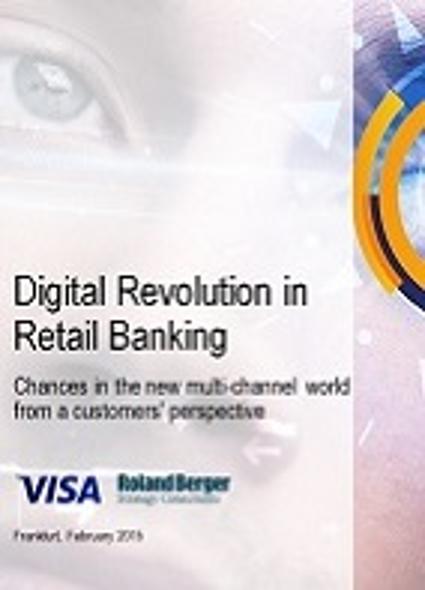Digital revolution in retail banking
![{[downloads[language].preview]}](https://www.rolandberger.com/publications/publication_image/rb_2155924_download_preview.jpg)
Chances in the new multi-channel world from a customers' perspective


Digitization has already changed customer expectations and behaviors in nearly every sector, and retail banking is no exception. In Germany, 63% already do their everyday banking online, and 55% would like to see brick-and-mortar branches offer more innovative customer experiences and services.
Mobile banking is also on the rise. 60% are interested in making it part of their normal banking experience, and that number holds up at 40% in the 60-and-older demographic. It is clear that retail banking must innovate to meet new demands, but also that there are many misconceptions in the industry as to how to go about it. Our study into the digital revolution in retail banking separates the truth from the fiction.
Do customers really want online banking? Yes, they do, and that demand runs across all age groups. We broke down customers into six customer segments: digital trendsetters, digital followers, digital wealth managers, young traditionalists, established conservatives, and mature financial abstainers. The latter is the only segment where digital services are irrelevant, and it represents only 7% of market share. For the 93% who do participate in digital services, more interconnected channels is not the answer, however. Although an average of 2.4 channels are used before the point of purchase, the preferred final channel remains the branch.

This may lead some to ask if digitization is really changing banking at all. The answer is yes, it is—but the potential for this growth is not yet fully realized. Customers use online banking because it is fast, flexible, and initial inquiries can be handled anonymously. These are specific added values that banks can continue to cultivate. This will not, however, mean the death of the branch. Brick-and-mortar will remain an essential part of the banking experience—62% still find branch location very important when choosing a bank—but they will have to adapt to changing customer expectations by offering more innovative services and visual design concepts.

Customers do trust the security of online banking, they do see it as an added value, and they want to use it. To make the digital transition seamless for their business and their customers, retail banking must react and align with the industry’s future.

![{[downloads[language].preview]}](https://www.rolandberger.com/publications/publication_image/rb_2155924_download_preview.jpg)
Chances in the new multi-channel world from a customers' perspective